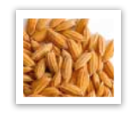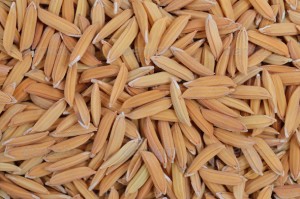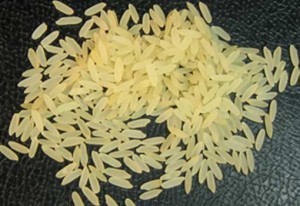Parboiled Rice
Parboiled rice (from the English words partially boiled) is a kind of rice that has undergone a special treatment allowing to increase the rice content of microelements (vitamins and mineral salts) and enabling to achieve a better final cooking behavior.
It has almost the same nutritional value as brown rice.
The rediscovery of an ancient method for a very modern and queekly cooked rice that ancient peoples such as the Egyptians already knew and largely used in order to better preserve rice consisting of a soaking process in hot water and sun drying.
A first big boost to parboiling production was given during World War II when the need to supply the troops with long term storage and high nutritional level foodstuff was imperative.
Processing methods used in the past consisted in soaking paddy in cold water, overheating for short time and then finally sun dried.
Nowadays parboiled rice is by far one of the most popular rice products in the world.
Today the paddy is soaked or dipped into hot water at atmospheric pressure up to the complete gelatinization of the starch contained in the grain and exposure at a temperature above 100°C, then cooked in the autoclave at vacuum pressure. Paddy is then dried up to the reduction of the moisture content to an optimal level and processed as usual.
In most countries the rice used for parboiling processing is paddy (rough rice) though, over the past few years in the U.S. and in Europe in particular, brown rice is being used as well. In both cases different types of parboiled rice can be obtained.
The different process solutions the grains undergo, allow the millers to select specific process parameters to match different production requirements. It is therefore important to know what impact the different kinds of processes will have on different rice varieties and on the quality of the final product.
Conventional Parboiling (obtained from paddy)
- Increased head rice yield during milling;
- Homogeneous and stable cooking and processing properties;
- Reduced stickiness of cooked rice;
- Improved nutritional value and extended shelf life.
Special Parboiling (obtained from brown rice)
- Prevention of dark colouring effects;
- Decreased cooking time;
- More delicate taste and smell compared to conventional Parboiling;
- Reduced water and energy consumption;
- Better final cooking behaviour in case of overcooking compared to white rice;
- Higher flavourings and seasonings absorption.
Another positive effect of parboiling is that rice turns out to be far more resistant to pest infestation since the steaming process sterilizes the grains so that they can be preserved longer.
Parboiled rice satisfies even the most demanding consumer expecting a perfect rice even in case of overcooking.
Through the lower release of starch in cooking stage, parboiled grains do not stick together, are well separated and can be reheated without loosing their original characteristics.
There are different kinds of parboiled rice, in accordance with the required final result:
the classic, ideal for all recipes such as cold rice salads and “risotto”, the fast cooking one, the long grain one, for side dishes and the integral one, the richest in fibers.
For these reasons parboiled rice has met over the years an increasing success among consumers and it is by now among the simplest and versatile products the modern food industry might offer.

2. Vitamins and mineral salts content is undoubtedly higher than in white rice.
3. Cooking behaviour, water absorption degree and characteristics of the product after cooking are far more different compared to white rice. Namely, one of its features is to keep the right texture even if overcooked.








